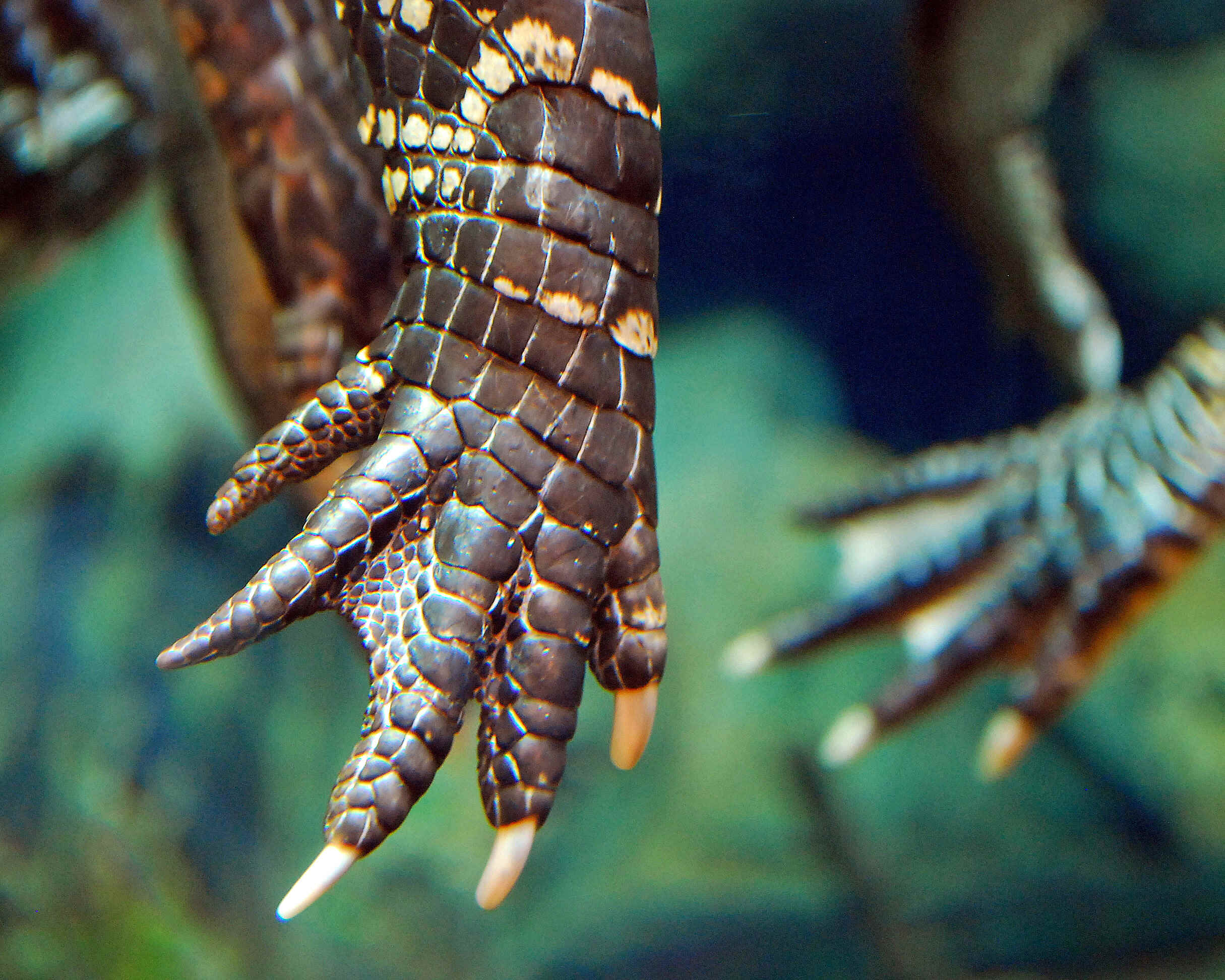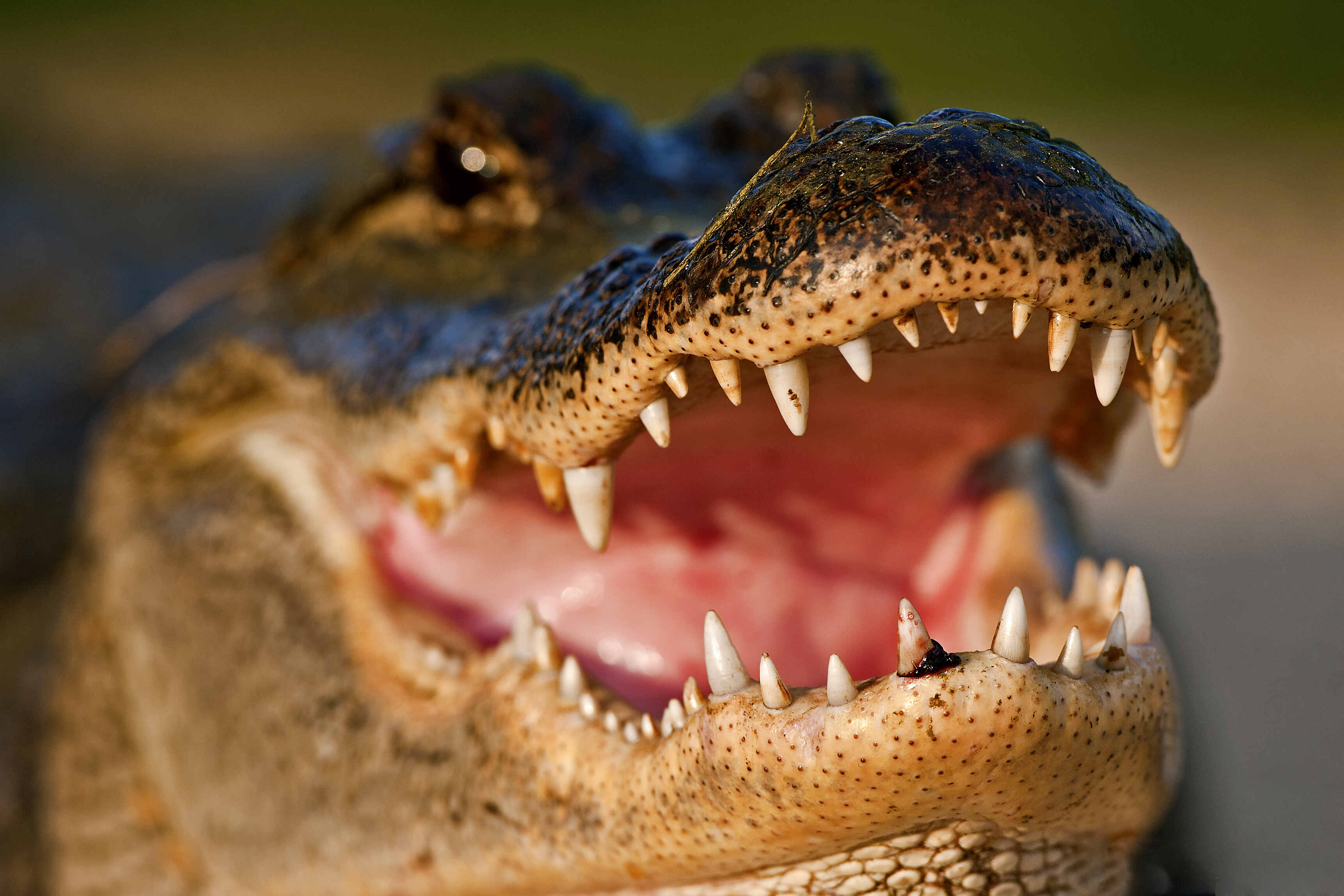
American alligators, or Alligator mississippiensis, are wild animals living in the southeastern United States.
Originally on the endangered species list, American alligators are thriving in the southeastern United States today! Here are 10 facts about the American alligator you might not know.
1. You can primarily find American alligators in Florida and Louisiana.
These reptiles only live in the United States, living in rivers, lakes, ponds, swamps, bayous, and marshes ranging from North Carolina to the Rio Grande in Texas, though they’re primarily spotted in Florida and Louisiana. As Floridians know, if there’s a body of water, there’s a high chance an alligator is in it. Sometimes you can even find this species on ocean beaches as they can tolerate salt water for brief periods of time!

2. Alligators can sprint up to 27 miles per hour.
While pretty clumsy on land, alligators are still fast, reaching speeds of up to 20 miles per hour in the water and up to 35 miles per hour on land in short bursts. However, these large animals are built for sprints, not marathons, and usually don’t chase people or other animals too long as they tire quickly. In comparison, the average human can run between 6.5 and 8 miles per hour.
3. Mother alligators carry their babies in their mouths.
Baby alligators are extremely vulnerable to predation once newly hatched because they’re only about six to eight inches long. Raccoons, bobcats, birds, snakes, large bass, and other alligators often hunt for newly hatched alligators as part of their diets, so the mother will gently carry her newly hatched babies in her mouth to water nearby in order to protect them. Young alligators then stay with their mothers for up to two years.
4. Alligators have different numbers of toes on each foot.
Interestingly enough, alligators have four short legs with different numbers of toes! Their front legs have five toes while the back legs have only four toes. The back four toes are webbed, which helps the alligator reach those top speeds in the water.

5. Alligators reach sexual maturity between 10 and 12 years old.
Similar to certain species of sharks, American alligators reach sexual maturity when they reach 10 to 12 years old or when they grow to 6 feet long. Once mature, a female alligator will lay between 35 to 50 eggs that will hatch after 65 days. This usually occurs between June and August, and the babies will make high-pitched noises from inside their eggs so the mother will remove the nesting materials that range from 7 to 10 feet in diameter and 2 to 3 feet high.
6. Alligators can live up to 50 years in the wild.
These large reptiles, usually between 10 and 15 feet long for males, can live up to 50 years in the wild! The American alligator is an important keystone species of the Southeast, burrowing in mud to keep warm. Once abandoned, these burrows fill with freshwater and are utilized by other species for breeding and drinking.
7. The temperature of the nest determines the sex of the juveniles.
During their 65-day incubation period, temperature matters in whether a baby alligator emerges as a male or female. Temperatures of 31 degrees Celsius or below produce female alligators, temperatures between 32 and 32.5 degrees Celsius produce 75 percent males, and temperatures above 32.5 degrees Celsius emerge mostly females.
8. Alligators can go through 3,000 teeth in their lifetime.
Because their bite is one of the most powerful on the planet, alligators wear down their teeth regularly. At any given time, alligators have about 76-80 teeth in their mouths, but as they’re ground down, they’re replaced up to 50 times throughout their lives. Scientists discovered that small replacement teeth grow under each mature tooth and cycle continuously.

9. Alligators were once endangered.
The United States Fish and Wildlife Service placed American alligators on the endangered species list in 1967. Twenty years later, the species was removed from the endangered species list, and now, over a million of these reptiles survive today. One of the main threats to alligators is habitat loss due to human activities including draining and developing wetlands.
10. Alligators are farmed for entertainment and their skins.
Heartbreakingly, these sentient beings are bred for profit, whether that’s for entertainment venues GetYourGuide sells tickets to, or so that their skins can be used in fashion accessories such as boots and purses. Copenhagen Fashion Week recently banned wild animal skins, including skins from alligators and their crocodile cousins, though others such as New York Fashion Week continue to allow it.
You can help alligators from enduring a lifetime of suffering.
Animals around the world depend on us to protect them from cruelty. Please sign up to receive the latest news and action alerts from World Animal Protection so we can keep you informed on how to protect animals, such as alligators, from a lifetime of suffering.